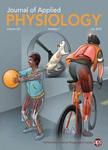版权所有:内蒙古大学图书馆 技术提供:维普资讯• 智图
内蒙古自治区呼和浩特市赛罕区大学西街235号 邮编: 010021

作者机构:Univ Florida Coll Publ Hlth & Hlth Profess McKnight Brain Inst Dept Phys Therapy Gainesville FL 32610 USA
出 版 物:《JOURNAL OF APPLIED PHYSIOLOGY》 (应用生理学杂志)
年 卷 期:2010年第108卷第5期
页 面:1187-1198页
核心收录:
学科分类:0710[理学-生物学] 0403[教育学-体育学] 07[理学] 071003[理学-生理学]
基 金:National Institute of Child Health and Human Development [1R01-HD-052682-01A1] University of Florida
主 题:respiratory control recruitment rate coding short-term potentiation
摘 要:Lee K-Z, Fuller DD. Preinspiratory and inspiratory hypoglossal motor output during hypoxia-induced plasticity in the rat. J Appl Physiol 108: 1187-1198, 2010. First published February 11, 2010;doi:10.1152/japplphysiol.01285.2009.-Respiratory-related discharge in the hypoglossal (XII) nerve is composed of preinspiratory (pre-I) and inspiratory (I) activity. Our first purpose was to test the hypothesis that hypoxia-induced plasticity in XII motor output is differentially expressed in pre-I vs. I XII bursting. Short-term potentiation (STP) of XII motor output was induced in urethane-anesthetized, vagotomized, and ventilated rats by exposure to isocapnic hypoxia (Pa(O2) of similar to 35 Torr). Both pre-I and I XII discharge abruptly increased at beginning of hypoxia (i.e., acute hypoxic response), and the relative increase in amplitude was much greater for pre-I (507 +/- 46% baseline) vs. I bursting (257 +/- 16% baseline;P 0.01). In addition, STP was expressed in I but not pre-I bursting following hypoxia. Specifically, I activity remained elevated following termination of hypoxia but pre-I bursting abruptly returned to prehypoxia levels. Our second purpose was to test the hypothesis that STP of I XII activity results from recruitment of inactive or silent XII motoneurons (MNs) vs. rate coding of active MNs. Single fiber recordings were used to classify XII MNs as I, expiratory-inspiratory, or silent based on baseline discharge patterns. STP of I XII activity following hypoxia was associated with increased discharge frequency in active I and silent MNs but not expiratory-inspiratory MNs. We conclude that the expression of respiratory plasticity is differentially regulated between pre-I and I XII activity. In addition, both recruitment of silent MNs and rate coding of active I MNs contribute to increases in XII motor output following hypoxia.